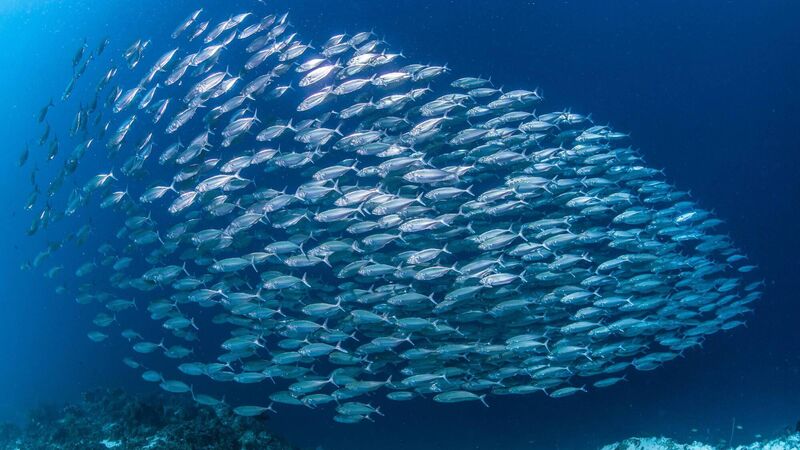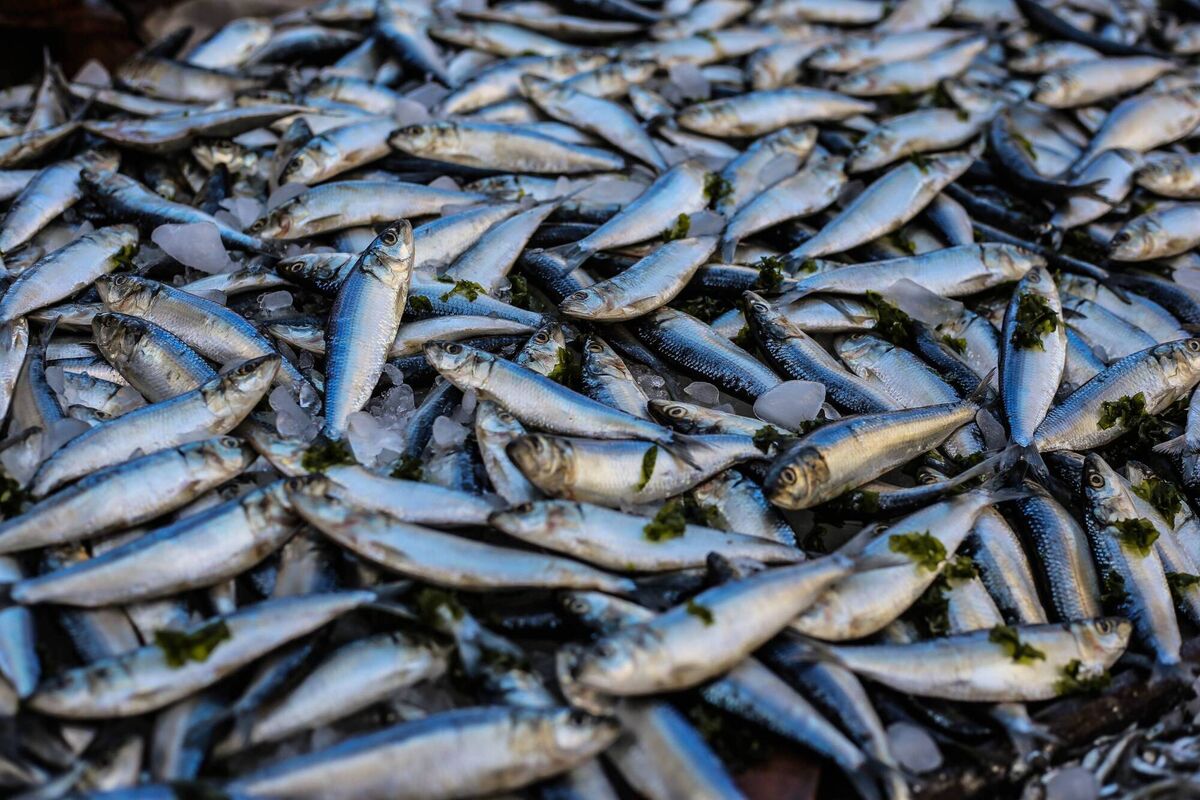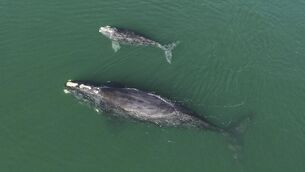Once 'sustainable' mackerel stocks are drastically declining

Anja Murray: "The future of mackerel in the North East Atlantic depends on human cooperation, between scientists and the fishing industry, and between governments of the countries that have traditionally benefited from mackerel."
Mackerel are a striking fish. Adorned with dark wavy lines against shimmering blues and greens, patterns that have evolved to enable mackerel to shoal together in tightly packed schools.
Reflective platelets on key parts of their bodies allow mackerel to sense subtle changes in their neighbours’ speed and direction. If one fish overtakes another, the crystal-lined stripe appears shorter; if a neighbour swims upward, the line dims. This refined visual system enables vast schools to move as one, shifting shape in stunning synchronicity.
In this way, shoals are more effective at catching the planktonic creatures that they forage for. Operating as a collective has clearly been working for mackerel, in evolutionary terms. Shoals can span up to nine kilometres long and four kilometres wide, with each fish finely tuned to those around them.
Shoaling also offers some protection from predators who are disoriented by the sudden changes in movement among the shimmering shoal. Tuna and marlin, in response, can coordinate their pursuit of mackerel. Whales, dolphins and seals manage to catch mackerel too, as do divebombing seabirds. In this way, mackerel are an essential component of many marine food chains.

CLIMATE & SUSTAINABILITY HUB
Their shoaling behaviour has always made it relatively easy for us humans to catch abundant mackerel. It is specially easy with the advanced techniques of modern trawlers equipped with sonar to locate shoals and with huge trawl nets.
Only recently, I wrote about how mackerel, despite declining numbers, are still considered Ireland’s most viable fishery. They are one of the few fish that have been considered sustainable in recent years, when so many other stocks have been collapsing.
But with news last week from the International Council for the Exploration of the Sea (ICES) that Atlantic mackerel populations are now rapidly dwindling, mackerel are now no longer an ethical option on our menus. The implications for Ireland’s fishing industry are far reaching.
Over the past decade, scientists have been gathering data that reveals how mackerel stocks have not been able to replenish at a rate to sustain continued catches. Since 2010 the annual total allowable catch has been averaging 39% higher than the scientific advice, amounting to tens of thousands of tonnes each year in excess of levels needed to allow Atlantic mackerel to recover to healthy levels.
Dutch supermarkets to stop selling Atlantic mackerel amid overfishing concerns 🚨
— Oceana UK (@OceanaUK) October 7, 2025
Northeast Atlantic mackerel is on the brink & experts have warned catch limits must be slashed by 70%
This is serious
If we don't respect the science, our seas will sufferhttps://t.co/rQUTWLCL1i
Despite the warnings, overfishing of mackerel stocks has continued. Now, this once abundant fish — until recently Ireland's most viable fishery — is on the brink of collapse.
Part of the challenge with mackerel in particular is the lack of an agreed management plan to fish within sustainable limits. Competition between countries over mackerel quotas in the Northeast Atlantic means that discussions have been fraught for decades. Failure to agree evidence-based limits to the overall quota has facilitated continued overfishing.
And while overfishing is the main problem for mackerel stocks, climate change has been having an impact too...
Rising sea temperatures and frequent marine heat waves have been causing a northward shift in the nutrient-rich upwellings that support the plankton that mackerel feed on. In response, mackerel have also migrated further north, often beyond traditional fishing areas within Irish and EU territorial waters. Since 2007, fishing vessels from Iceland and the Faroe Islands have increasingly targeted mackerel in these northern areas, harvesting significant quantities of the overall stock. This shift has contributed to diplomatic tensions among Norway, Iceland, and the EU, referred to as the 'mackerel wars'.
Now, a cut of more than 70% is needed in the total catch if the Atlantic mackerel stocks are to have any chance of recovery. In absolute terms, this is a reduction from the estimated 755,143 tonnes allowed as total catch in 2025 to a total catch of 174,357 tonnes for 2026.
ICES describes these recommended measures as ‘a rescue mission for the stock’. If the fishing pressure from commercial trawls subsides, additional conservation measures could also help the population. Spawning fish would benefit from strict protection in their spawning areas, especially from February to July, their spawning season.
Networks of Marine Protected Areas could do much to restore marine habitats and healthy fisheries. Protecting nursery habitats, where juveniles often linger until mature, would certainly help.
But most of all, the future of mackerel in the North East Atlantic depends on human cooperation, between scientists and the fishing industry, and between governments of the countries that have traditionally benefited from mackerel.
We could certainly learn a lot from mackerel about collective approaches for the common good.








